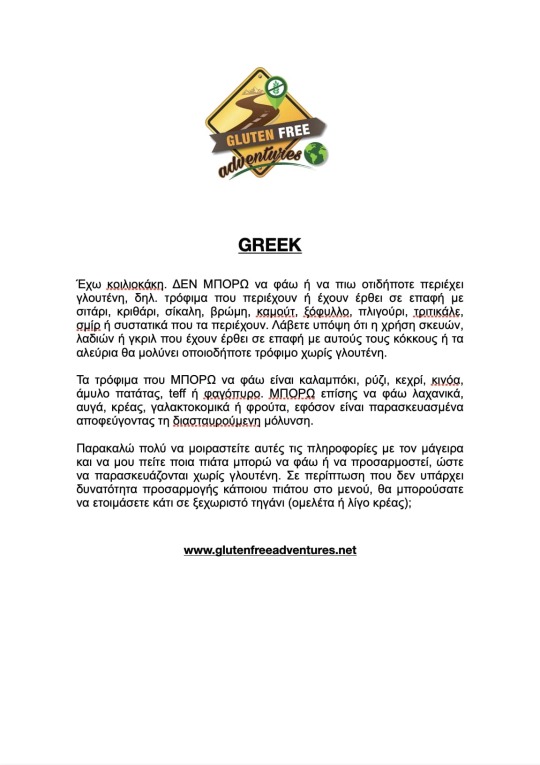#Lactose-Free Dairy Products Market
Explore tagged Tumblr posts
Text
The market for dairy products without lactose, a niche within the broader allergen-free food sector, serves those who either cannot digest lactose or prefer their dairy without this sugar.
#Lactose-Free Dairy Products Market#Lactose-Free Dairy Products Industry#Lactose-Free Dairy Products Market Report#Lactose-Free Dairy Products Market Research#Lactose-Free Dairy Products Market Analysis#Lactose-Free Dairy Products Market Growth#BIS Research#FoodTech
1 note
·
View note
Text
Lactose Free Dairy Products Market - Notable Developments, Potential Players & Worldwide Opportunities 2032
By 2032, the lactose free dairy products market is predicted to be worth USD 23.1 Billion, growing at a CAGR of 5.5% between 2022 and 2032.
Lactose intolerance is a common and debilitating illness that affects an estimated 75% of people worldwide. As a result, consumers avoid dairy products since lactose is difficult for them to digest. Lactose intolerance currently affects over 40 million Americans, or around one-third of the population, in varying degrees of severity.
It is particularly common in people of East Asia, affecting more than 90% of adults in some of these populations. As a result, lactose-free dairy products have a large growth opportunity in the global market.
Various studies have shown, however, that a lactose-intolerant consumer can readily ingest a small number of dairy products because lactose levels are relatively low in them. Nonetheless, the introduction of lactose-free dairy products to the market gave lactose-intolerant consumers the ability to consume dairy-based food items in the desired quantity.
Request for Sample@ https://www.futuremarketinsights.com/reports/sample/rep-gb-2507
Key Takeaways from Market Study
The market is segmented based on product type, wherein lactose free milk is anticipated to account for a major chunk of the market share over the forecast period
The North American lactose free dairy products market is expected to witness a lucrative growth rate of 5.8% during the forecast period.
Lactose free dairy products which are organic is expected to hold a market share of over 40% in the forecast period
Lactose free dairy products is also segmented based on form, wherein the liquid form is expected to account for a sizeable portion of the market share over the forecast period
Leading Companies Profiled in Lactose Free Dairy Products Market are:
Green Valley Creamery
McNeil Nutritionals
Valio International
Alpro
Arla Foods Amba
Cabot Creamery Corporation
Saputo Dairy rProducts
The Danone Company
Smith Dairy Products
Hiland Dairy Foods
“Lactose free dairy product faces stiff competition from other plant-based food products, which has slowed down the growth potential of the market,” says a Future Market Insights analyst.
Competitive Landscape
Leading lactose free dairy products makers are preferring to create new products to provide customers with a wide range of options, while the less adopting tactics included expanding into new regions and raising knowledge about lactose-free dairy products:
In 2020, Valio, a Finnish dairy and food firm, and Palmer Holland collaborated to distribute lactose-free milk powders. This was a critical step in bringing new value-added dairy components to the US market for both parties
Danone launched a lactose-free food line in Spain, named Activia, with a few varieties to capitalize on the country’s lactose-free population
Get full Report now to gain access to detailed information about each segment@ https://www.futuremarketinsights.com/reports/lactose-free-dairy-products-market
0 notes
Text
The India Lactose Free Dairy Products Market is projected to grow at a CAGR of around 7% during the forecast period, i.e., 2022-27. The market is driven by the rapidly increasing population of lactose intolerants, upsurging the demand for lactose-free dairy products to cater to their unmet needs and cravings. It, in turn, is also generating growth opportunities for the leading players to increase their production & distribution capacities to cater to the burgeoning demands across India.
#India Lactose Free Dairy Products Market#India Lactose Free Dairy Products Market Growth#India Lactose Free Dairy Products Market Size#India Lactose Free Dairy Products Market Industry#India Lactose Free Dairy Products Market shape and size
0 notes
Text
The Best Vegan Cheese Brands for Dairy-Free Delight

Switching to dairy-free alternatives has never been easier with the rise of best vegan cheese brands. Whether you're lactose intolerant, following a plant-based diet, or simply looking to explore healthier options, these cheeses offer incredible taste and texture without any animal-derived ingredients. With various options available in the market, finding the best ones can be challenging.
Why Choose Vegan Cheese?
Vegan cheese is a great alternative to dairy-based cheese as it is often made from nuts, soy, coconut, or root vegetables. Many options are fortified with essential nutrients like vitamin B12 and calcium, making them a nutritious choice. Additionally, they are often lower in cholesterol and free from harmful additives found in some traditional dairy cheeses.
Top Best Vegan Cheese Brands to Try
1. Miyoko’s Creamery
Miyoko’s is well-known for its artisanal, high-quality vegan cheese made from cashew nuts and organic ingredients. Their aged cheeses, mozzarella, and butter alternatives have a rich, creamy texture that closely resembles traditional cheese.
2. Violife
A widely loved brand, Violife offers a range of vegan cheeses, including cheddar, mozzarella, and Parmesan alternatives. Made primarily from coconut oil and enriched with vitamin B12, Violife cheeses melt beautifully and are perfect for pizzas and sandwiches.
3. Daiya
Daiya has been a staple in the vegan community for years. Their shredded cheese, slices, and cream cheese alternatives are free from dairy, gluten, and soy, making them an allergen-friendly choice.
4. Kite Hill
Kite Hill produces almond-based cheeses with a rich and tangy flavor. Their cream cheese spreads, ricotta, and soft cheeses are popular choices for those looking for a dairy-free, gourmet experience.
5. Treeline Cheese
Treeline focuses on probiotic-rich, fermented cashew cheeses. Their products are creamy, flavorful, and perfect for spreading on crackers or pairing with wine.
6. Follow Your Heart
Follow Your Heart is known for its versatile cheese options, including blocks, slices, and shredded varieties. They use a blend of starches and coconut oil to create an authentic cheese-like experience.
7. Good Planet Foods
If you're looking for a vegan cheese that melts and stretches like traditional cheese, Good Planet Foods delivers. Their range includes shredded mozzarella and cheddar alternatives that work well in hot dishes.
8. Parmela Creamery
This brand focuses on aging nut-based cheese to achieve complex flavors. Their nut-based shreds and slices have a rich taste and excellent melting properties.
9. Cheezehound
A boutique brand specializing in handmade, artisanal vegan cheeses, Cheezehound offers small-batch dairy-free delights with rich flavors and gourmet appeal.
10. Nush
Nush provides a unique take on vegan cheese by using almonds as the base. Their creamy spreads are light, tangy, and full of probiotics for gut health.
How to Choose the Best Vegan Cheese for Your Needs
Consider the Base Ingredients: Vegan cheese can be made from cashews, almonds, soy, or coconut oil. If you have allergies, check the ingredient list carefully.
Check for Fortification: Some brands add nutrients like vitamin B12 and calcium to mimic the nutritional profile of dairy cheese.
Melting Capability: If you're looking for a vegan cheese that melts well, opt for brands like Violife, Daiya, or Good Planet Foods.
Texture and Flavor Preferences: Soft cheeses like Kite Hill's cream cheese are great for spreading, while aged nut-based cheeses from Miyoko’s and Treeline offer a stronger, more complex taste.
Creative Ways to Use Vegan Cheese
Grilled Cheese Sandwiches: Use slices from Daiya or Follow Your Heart for a gooey, melted treat.
Pasta and Pizza: Shredded cheeses from Violife or Good Planet Foods work well for baking.
Cheese Boards: Pair artisanal cheeses from Miyoko’s or Treeline with fruits and nuts for an elegant snack.
Dips and Spreads: Kite Hill's cream cheese or Nush’s almond cheese are perfect for crackers and bagels.
Stuffed Peppers or Vegan Burgers: Add a slice of your favorite vegan cheese to enhance flavor.
The Future of Vegan Cheese
With more brands investing in research and development, the quality and taste of vegan cheese continue to improve. Innovations in fermentation and plant-based proteins have led to better textures, stronger flavors, and healthier ingredient profiles. As demand grows, expect to see more variety and accessibility in mainstream grocery stores.
Final Thoughts
Finding the best vegan cheese brands depends on personal preference, dietary needs, and usage. Whether you’re looking for a spreadable option, a cheese that melts well, or an artisanal treat, there is a wide selection available. Experiment with different brands to discover the one that suits your taste and enjoy dairy-free cheese without compromising on flavor or quality.
2 notes
·
View notes
Text
Lactose Intolerance Market Growth, Opportunities and Industry Forecast Report 2034

Lactose intolerance is a digestive disorder where individuals cannot digest lactose, a sugar found in milk and dairy products. This has led to a significant demand for lactose-free products, including dairy alternatives and enzyme supplements, creating a thriving market. The lactose intolerance market is expected to see strong growth in the coming years, driven by rising lactose intolerance cases, particularly in Asia-Pacific, where a large percentage of the population is affected.
The lactose intolerance Market related products, including lactose-free foods, beverages, and lactase supplements, has witnessed strong growth. The global lactose-free market was valued at around USD 12 billion in 2022 and is projected to reach USD 18-20 billion by 2030, growing at a compound annual growth rate (CAGR) of approximately 6-7%. The rising consumer awareness about the digestive issues associated with lactose intolerance is a key factor driving this growth.
Get a Sample Copy of Report, Click Here: https://wemarketresearch.com/reports/request-free-sample-pdf/global-lactose-intolerance-market/1521
Lactose Intolerance Market Drivers
Several factors are driving the growth of the lactose intolerance market:
Increasing Prevalence: Studies indicate that over 65% of the global population has some degree of lactose intolerance, leading to higher demand for solutions.
Rising Health Awareness: As more consumers seek to avoid gastrointestinal discomfort associated with lactose consumption, awareness campaigns and medical advice have led to a surge in demand for lactose-free products.
Dairy Alternatives: Growing interest in plant-based diets is pushing demand for lactose-free dairy alternatives like almond, soy, oat, and coconut milk. Veganism is another contributing factor here.
Product Innovations: Manufacturers are developing lactose-free dairy products, including milk, cheese, and yogurt, as well as supplements like lactase enzymes.
Lactose Intolerance Market Trends
Consumer Preference Shift: There has been a notable shift toward plant-based alternatives and lactose-free products as consumers seek more sustainable and healthy choices.
Fortification of Dairy Alternatives: Companies are fortifying plant-based products with nutrients like calcium, vitamin D, and protein to match the nutritional profile of traditional dairy.
Online Retail Growth: The rise of e-commerce platforms has made lactose-free products more accessible, increasing consumer convenience and fueling market growth.
Lactose Intolerance Market Challenges
Product Cost: Lactose-free products are often more expensive than their traditional counterparts, which can limit their appeal to cost-sensitive consumers.
Taste and Texture: Some consumers may still prefer the taste and texture of regular dairy products, which can make transitioning to lactose-free or plant-based alternatives challenging.
Lactose Intolerance Market Regional Analysis
North America and Europe are leading markets for lactose-free products, driven by well-established dairy industries and rising lactose intolerance awareness. The U.S. and Germany are key markets in these regions.
The Asia-Pacific region is expected to witness the highest growth, fueled by the high prevalence of lactose intolerance, particularly in countries like China, India, and Japan. The region’s large population, combined with increased disposable income and growing awareness of lactose intolerance, is propelling the market forward.
Lactose Intolerance Market Segmentation,
Product Type:
Lactose-Free Dairy Products: Milk, cheese, yogurt, ice cream.
Dairy Alternatives: Soy milk, almond milk, rice milk, oat milk.
Distribution Channel:
Supermarkets and Hypermarkets
Online Stores
Specialty Stores
Convenience Stores
Key companies profiled in this research study are,
Nestlé S.A.
Danone S.A.
The Coca-Cola Company (Fairlife)
Johnson & Johnson (Lactaid)
General Mills, Inc.
Valio Ltd.
Arla Foods amba
Dean Foods Company
Parmalat S.p.A.
Saputo Inc.
Conclusion
The Lactose Intolerance Market is poised for sustained growth, driven by increasing global awareness of lactose intolerance and the rising demand for lactose-free and dairy alternative products. As more individuals seek health-conscious, digestive-friendly, and sustainable options, the market for lactose-free dairy, plant-based alternatives, and lactase supplements will continue to expand. However, challenges such as product cost and taste preferences need to be addressed through innovation. With major industry players focusing on product development and fortification, the future of the lactose intolerance market appears promising, offering both consumers and businesses a wide range of opportunities.
#LactoseIntoleranceMarketShare#LactoseIntoleranceMarketDemand#LactoseIntoleranceMarketScope#LactoseIntoleranceMarketAnalysis#LactoseIntoleranceMarketForecast
2 notes
·
View notes
Text
How the Plant-based Milk Market is Growing Worldwide: A Sustainable Alternatives
The global plant-based milk market size is estimated to reach USD 32.35 billion in 2030 and expand at a CAGR of 7.6% from 2024 to 2030, according to a new report by Grand View Research, Inc. The growth of the plant-based milk market is primarily driven by shifting consumer preferences towards healthier dietary choices and increasing awareness of lactose intolerance and dairy allergies. Consumers are increasingly opting for plant-based alternatives such as almond, soy, oat, coconut, and others, which offer nutritional benefits including vitamins, minerals, and proteins, without compromising on taste.

The growing adoption of vegan and flexitarian lifestyles worldwide has significantly expanded the consumer base for plant-based milk products. These dietary choices are driven by ethical considerations, environmental sustainability concerns, and perceived health benefits associated with reduced consumption of animal products is further expected to drive the market for plant-based milk during the forecast period.
The availability and convenience of plant-based milks have significantly improved, contributing to market growth. Major retailers and supermarkets now stock a wide range of plant-based milks, making them easily accessible to consumers. Online grocery platforms have also expanded their plant-based milk offerings, allowing consumers to conveniently purchase their preferred products from the comfort of their homes. This factor is further expected to drive the market for plant-based milk during the forecast period.
The plant-based milk market has seen significant expansion beyond North America and Europe, reaching new markets in Asia, Latin America, and the Middle East. In Asia, where lactose intolerance is prevalent, plant-based milks are gaining popularity as a suitable alternative to dairy. In Latin America, the growing middle class and increasing awareness of health and environmental issues are driving demand for plant-based milks.
Manufacturers in the plant-based milk market are investing in research and development to innovate and expand their product portfolios. This includes the introduction of new plant sources such as almond, soy, oat, coconut, and others, as well as fortified variants enriched with vitamins, minerals, and protein. Innovations in flavor profiles and packaging formats cater to diverse consumer preferences and convenience.
For More Details or Sample Copy please visit link @: Plant-based Milk Market Report
Plant-based Milk Market Report Highlights
Asia Pacific is expected to grow with the fastest CAGR of 8.2% over the forecast period from 2024 to 2030. The rise of vegetarianism and veganism, driven by concerns about animal cruelty, supports the demand for plant-based milks.
Based on product, the oat milk is expected to grow with the fastest CAGR of 9.4% over the forecast period. Oat milk is rich in dietary fiber, particularly beta-glucan, which has been shown to help lower cholesterol levels. Additionally, oat milk often contains higher levels of protein compared to other plant-based milks, making it a nutritious option for consumers.
Based on nature, organic plant-based milk is expected to growth with the fastest CAGR of 11.5% from 2024 to 2030. Organic plant-based milks are free from synthetic pesticides, fertilizers, and genetically modified organisms (GMOs), which appeals to health-conscious consumers.
Based on distribution channel, sales of plant-based milk proudcts through hypermarkets & supermarkets accounted for the largest share in the plant-based milk market in 2023. These retail outlets offer a wide variety of plant-based milk products, including different brands, types, and flavors. The extensive product range allows consumers to compare and choose according to their preferences, driving sales through this channel.
Gain deeper insights on the market and receive your free copy with TOC now @: Plant-based Milk Market Report
We have segmented the global plant-based milk market based on product, nature, flavor, distribution channel, and region.
#PlantBasedMilk#DairyAlternatives#VeganMilk#NonDairy#PlantBased#MilkMarket#SustainableFood#FoodInnovation#HealthyLiving#VeganTrends#LactoseFree#DairyFree#PlantBasedDiet#FoodIndustry#MarketGrowth
5 notes
·
View notes
Note
Hello! I hope you’re well 🌻 I have a question. I would dearly love to visit Greece someday, but unfortunately I have a lot of food sensitivities (to gluten, dairy, and nuts) and I was wondering, if I was in a big city like Athens, how possible it would be to find accommodations for those sensitivities? Maybe? Not at all?
Thank you so much!
🌼 Hello! 🌼
No need to worry, you won’t have a problem in Athens! I believe you wouldn’t need to worry much in any of the 5 - 7 largest cities in Greece and the 3-5 most cosmopolitan islands.
🍧The nuts are the easiest one to avoid as the overwhelming majority of savoury Greek food doesn’t include nuts. However, nuts are an integral part in traditional Greek pastry making and there unfortunately you will have to keep your distances. However, you will find places in the big cities with gluten free and vegan pastries, even if they are not the most traditional options. BUT!!! There is also the literally most traditional Greek sweets that are both gluten free and dairy free: spoon sweets, usually made of dried fruits and syrup!!! Just make sure to choose one without nuts, there are many flavours!

Tomato, fig and apricot spoon sweets. There are many many more varieties! You will find them in traditional spoon sweet, herb and spice shops, some pastry shops, perhaps upscale hotels, upscale traditional cafes. The most classic varieties could be found in some supermarkets too.
👩🍳 When it comes to savoury food, things are much easier. With a search in Tripadvisor for Athens with the sensitivity filters, the site gives me 1347 results back. Here’s the link to the search. So you are not going to have a problem. You can also search for “best dairy free gluten free places in Athens”, there are some articles with guides and tips. Many medium and upscale restaurants also write in their menus that they have suitable dishes or that they are open to discuss your sensitivities and modify your dish accordingly.
🏨 If you intend to stay in a hotel and eat breakfast and / or dinner there, check their amenities / services on their website first, it might be mentioned there. If not sure, I believe you should discuss it first with the hotel via a call or an email to be sure before making the reservation. I believe several medium and more upscale hotels (4 and 5 stars) will take into consideration food sensitivities.
☕️ As for coffee shops, in the big cities many nowadays have dairy substitutes such as oat and almond milk. I believe rice milk is rarer, so if those bother you, keep in mind to check what the substitute milk is.
🏪 In the big supermarkets you will have no problem finding dairy substitutes (ie vegan or lactose free milk and cheese) . Gluten free pasta are easily available too. Gluten free is a little more challenging when it comes to snacks. Brands like Papadopoulos and VIOLANTA offer a few gluten-free snacks. Just keep in mind that we really love nuts in our snacks and candies and you have to double check every snack you see for potential warnings, because a lot do not have milk or nuts but are produced in the same industrial machines as milk and nut products which means they might be contaminated. Avoid mini-markets for snacks and substitutes.
🌯 Another tricky area is fast food. Our fast food is usually pies and pitas and you won’t be able to find gluten free options very easily. Obviously however you can get a portion of souvlaki or gyros without wrapping it in a pita or a bread so there’s that! Combine it with tomatoes, onions, ketchup, lettuce, potatoes and you are more than fine! But in order to try wrapped fast food, you will definitely have to check such guides for specialised restaurants I mentioned above.
Now the good news: aside from the snacks and fast food, the traditional Greek cuisine is based on the Mediterranean diet in which gluten ingredients are naturally limited.
🥗 Traditional Greek food revolves around meat, veggies, fish, seafood and beans. (And dairy but dairy can be more easily avoided.) This means that even if you are in any place in Greece, less modern and fancy, you will still be able to eat from a variety of dishes. Check the menu for the ingredients on the dishes and discuss with the waiter if you have questions and you can avoid the problems even in a pretty traditional place.
Below are some very traditional meals dairy and gluten free that can be found in low-key non specialising places:
Grilled or boiled vinegar octopus

Wild greens salad:

Yemistá (tomatoes and peppers stuffed with rice and sometimes minced meat - do double check that they haven’t put nuts in)

Agurodomata salad (essentially the Greek village salad but without the feta cheese, you can also ask it as a Horiatiki / Greek salad without the feta)

Spanakórizo (spinach rice)

Gígantes (Giant beans)

Many other delicacies in tsipouradika (seafood shops) and mezedopolía (appetizer shops) and of course all the dishes that involve meat and fish, particularly grilled, which are literally the most common. But beware of deep fried ones, in case they coat them in egg or wheat. I also don’t know if you have any limitations with spices and herbs, this is something you should keep in mind.
I also found a Greek gluten free restaurant card in case you stumble onto a restaurant where they don’t know good English (extremely unlikely in Athens, unlikely elsewhere as well)


Heck I don’t know why it put that red corrector on the image wtf. Anyway I have myself underlined with the thick red line the words αυγά (eggs), γαλακτοκομικά (dairy) and ομελέτα (omelette). The card is exclusively for gluten free, it says what you can’t eat and then goes on with what you can eat. This is why I underlined eggs and dairy, so that you can see which words they are and blur them if you print the clear copy. It proceeds with asking that in case the cook can’t adjust any dish from the menu, then whether they can prepare a simple dish with an omelette (I underlined it) or meat. (Of course if you can eat eggs, you don’t have to scratch it out, that’s why I underlined them to show you the words and gave you a clear copy as well.)
I found cards and apps for dairy and nuts in Greek but they were behind a paywall 😑
Anyway that’s all from me: as a summary, there are several options in Athens and you will surely be able to get by in other large cities and the top cosmopolitan islands. The truth is that this may affect a little the prices but Greece is overall cheaper than west Europe and the cosmopolitan regions in the US, so upscale and specialised shops in Greece will be like medium shops in those other places price-wise. (Note: Not true for Mykonos and Santorini islands) What you should be a little more cautious with is pastries and snacks.
Hope this helped a little! I wish you a carefree and delicious stay in Athens when you come ❤️
* If any of my Greek followers has personal recs of cool places for the Anon, please comment!!!
#greece#Greek cuisine#food intolerance#food allergy#gluten free#dairy free#nut allergy#guide#Greek food#Athens#tourist guide#anon#ask#Greek facts
10 notes
·
View notes
Text






















World Milk Day
Start your day with a glass of calcium-rich milk, visit a local dairy farm, or see what milk alternatives like soy, oat, or almond milk you might enjoy.
It’s a well-known fact that milk is rich with calcium, a mineral that promotes healthy teeth and bones. June 1st is the date that has been set aside to celebrate Milk Day. And, of course, this is a celebration that can take place anywhere in the world, given that milk is a global food!
The use of milk in food and drink has been happening for thousands of years. As most people can appreciate, milk is an integral part of most people’s daily lives, and there’s an entire industry that revolves around it as well.
Milk is a liquid food rich with nutrients like calcium. It’s a food product that is primarily used by mammals during infancy. Although, in the case of humans, people tend to consume it in adulthood, as most adult humans can digest the lactose in milk.
Of course, milk isn’t only available for drinking. It’s an essential ingredient for dairy foods such as butter, cream, ice cream, and cheese. Milk can also be found as an ingredient used in other types of foods, such as bread, cakes, cereal, desserts and so much more.
There is no denying that milk has become a mainstay of most people’s diets today. It’s also one of the cheapest food products to buy, given the industrial scale of milk production in the world. Some of the largest producers of milk are the United States, India, and China.
History of Milk Day
Milk Day became a globally celebrated event on June 1st, 2001. The global celebration, in general, can be traced back to the United Nations (UN). In particular, the FAO (Food and Agriculture Organization) of the UN has been responsible for organizing and marketing World Milk Day throughout the globe.
More than two decades ago, the FAO proposed a global Milk Day to recognize the importance of milk and the role that it plays in our world. In addition, this day was also created to provide direct focus to the milk industry and publicize the various activities connected with it. In fact, the dairy industry supports the livelihoods of approximately 1 billion people throughout the world!
But even before this day was created in 2001, Milk Day was celebrated by some other nations throughout history. In the British Isles, for example, a Milk Day celebration (“Imbolc” – Celtic for “milk”) took place in the pre-Christian era.
Considering the fact that over six billion people worldwide consume milk and dairy, it’s no surprise there was a need to celebrate this healthy, delicious beverage!
How to Celebrate Milk Day
June 1st is a day that many people may want to write their diaries. Milk plays such a significant role in the world that should certainly be celebrated in style!
But what can be done to celebrate such a momentous occasion? Try out some of these ideas for enjoying Milk Day:
Get the Day Started with a Glass of Milk
Why not celebrate today with a glass of fresh, cold milk in the morning to kick-start the day?! But don’t stop there. How about enjoying a big bowl of cereal full of delicious milk?
Of course, after drinking that glass of milk, don’t forget to snap a photo of that beautiful milk mustache! Share it with the world on social media to remind everyone else to enjoy Milk Day too.
Join an Official Milk Day Celebration
As a worldwide event, Milk Day comes with all kinds of official opportunities to celebrate! In 2020, more than 400 Milk Day campaigns took place in over 68 countries all over the globe, so there should be plenty to join in with again this year. Here are some events that have taken place in previous years:
World Milk Day Milk Donation. Happening in New York State, USA, several organizations have gotten together to provide a free gallon of milk to the people in their local community who visit a dairy farm.
Live Recipes by Renowned Chefs from Around the World. This live Facebook event has been hosted by Amul, India, which is the country’s largest dairy brand, with the intention of showing the importance of milk throughout different countries and cultures.
International Dairy Federation Raise a Glass Event. Hosted by the IDF in Brussels, Belgium, this event involved hosting a toast to milk from people all around the world.
Check the World Milk Day website to get access to all the needed information to make plans for this day.
Visit a Local Dairy or Farm
For those who have some extra time, especially those with kids who are ready to learn, consider visiting a local dairy to learn the process of milking cows and collecting the milk. This will also lead to learning about pasteurizing and homogenizing milk, methods used to filter milk and keep it long-lasting.
If there are no cow farms nearby, consider visiting a smaller farm that has goats. It’s still possible to learn about everything milk-oriented but may be more accessible because they might be smaller and locally owned.
Enjoy Other Milk Products
For lunch, why not have a mozzarella or Margherita pizza and drink a glass of chocolate milk to wash it down? After that, those who are still feeling hungry could always have some delicious ice cream for dessert!
Other options for enjoying milk products on this day (and every day!) include yogurt, sour cream, butter, custard, cream and all of the recipes that can be made from them.
Try a Milk Alternative
For folks who have trouble digesting dairy easily, why not try other non-dairy milk alternatives? Here are some popular options:
Soy Milk. A favorite as one of the early milk alternatives, this one is made from soybean plants that grow fairly prolifically in many places.
Almond Milk. Made by crushing almonds and blending them with water, and then straining out the mix to remove any solids that are left, this nutty milk is filled with protein.
Coconut Milk. This one uses the white, fleshy part of the coconut, grating it and soaking it in water. The cream rises and is skimmed off, then what’s left is strained to extract the coconut milk.
Whether with a milk product or a dairy alternative, celebrating World Milk Day can be loads of fun!
Source
#chocolate cake#Rice pudding with cinnamon#flan de huevo#Pudim flan#Crème caramel#chocolate pie#whipped cream#dessert#Spain#travel#original photography#summer 2021#vacation#World Milk Day#1 June#WorldMilkDay#Princess cake#Strawberry Shortbread#USA#Strawberry Milkshake#Chocolate Banana Milkshake#Berries&Cream#Coconut Cream Pie#Banana Cream Pie#Strawberry Cheesecake Milkshake#Pecan Praline Milkshake#food#restaurant#Coconut Cream Pie Cheesecake#Pecan Pie
3 notes
·
View notes
Text
Dairy Alternatives Market: Exploring the Benefits of Plant-Based Milks
The dairy alternatives market has been undergoing a significant transformation over the past decade. With increasing awareness about health, environmental sustainability, and ethical concerns surrounding animal agriculture, plant-based milks have gained popularity as a viable alternative to traditional cow’s milk. This shift in consumer preferences has created a booming market for dairy alternatives, with a wide variety of plant-based milks now available on the shelves. From soy to almond, oat to rice, plant-based milks are providing consumers with more options than ever before. In this article, we will explore the various benefits of plant-based milks and the factors contributing to the growth of the dairy alternatives market.
Health Benefits of Plant-Based Milks
One of the primary drivers behind the rise of plant-based milks is the increasing focus on health and wellness. For many consumers, dairy alternatives offer a healthier option compared to traditional cow’s milk, which is often associated with lactose intolerance, high cholesterol, and other health concerns.
Lactose-Free
Lactose intolerance affects a significant portion of the global population, with studies estimating that around 65% of adults have some degree of difficulty digesting lactose, the sugar found in cow’s milk. For those with lactose intolerance, consuming dairy can lead to uncomfortable symptoms such as bloating, gas, and diarrhea. Plant-based milks, such as almond, soy, and oat, are naturally lactose-free, making them an ideal alternative for individuals who struggle with lactose digestion.
Lower in Saturated Fat
Another benefit of plant-based milks is that they are generally lower in saturated fat compared to cow’s milk. High consumption of saturated fat has been linked to an increased risk of heart disease and high cholesterol levels. Plant-based milks such as almond, oat, and rice milk tend to have lower fat content, making them a heart-healthier option. Some plant-based milks are fortified with additional nutrients like calcium, vitamin D, and vitamin B12, which are typically found in dairy products, ensuring consumers still get essential vitamins and minerals.
Rich in Nutrients
In addition to being lower in saturated fat, many plant-based milks are rich in nutrients, particularly for those who follow vegetarian or vegan diets. For example, soy milk is a good source of protein, while almond milk provides healthy fats and vitamin E. Oat milk is an excellent source of fiber, which can aid in digestion and improve heart health. Rice milk is naturally sweet and can be a great option for those with nut allergies. Many brands fortify their plant-based milks with additional vitamins and minerals, including calcium and vitamin D, to ensure consumers receive the necessary nutrients for bone health.
Environmental Benefits of Plant-Based Milks
In recent years, environmental sustainability has become a crucial factor in consumer decision-making. The dairy industry has a significant environmental footprint, particularly in terms of greenhouse gas emissions, water usage, and land requirements. As the world faces the challenges of climate change, many consumers are turning to plant-based milks as a more sustainable option.

Lower Carbon Footprint
Animal agriculture, especially dairy farming, is responsible for a large portion of greenhouse gas emissions. According to a study published by the Food and Agriculture Organization (FAO), livestock production accounts for around 14.5% of global greenhouse gas emissions, with dairy farming being one of the largest contributors. Plant-based milks, on the other hand, have a much smaller carbon footprint. For instance, almond and oat milk production emit far fewer greenhouse gases compared to cow’s milk. As such, choosing plant-based milks over dairy is seen as a simple yet effective way to reduce one’s environmental impact.
Reduced Water Usage
The dairy industry also has a significant impact on water resources. Producing one liter of cow’s milk requires approximately 1,000 liters of water, including water for feed crops, livestock drinking water, and milk processing. In contrast, plant-based milks such as almond, soy, and oat require significantly less water to produce. For example, producing one liter of oat milk requires only about 48 liters of water, making it a far more water-efficient choice. As consumers become more conscious of water conservation, the demand for plant-based milks continues to rise.
Less Land and Resource Intensive
Dairy farming requires large amounts of land for grazing and growing feed crops for livestock. Additionally, the production of cow’s milk contributes to deforestation in certain regions, further exacerbating environmental concerns. Plant-based milks, by contrast, generally require less land and fewer resources to produce. Oat, soy, and almond farming can often take place on smaller plots of land, allowing for more sustainable land use and reduced environmental degradation.
Ethical Considerations
Ethical concerns related to animal welfare are another significant factor contributing to the growth of the plant-based milk market. The dairy industry has long been criticized for the treatment of cows, particularly in factory farming environments. Many consumers are increasingly concerned about the ethical implications of supporting an industry that often subjects animals to harsh conditions.
By choosing plant-based milks, consumers can avoid contributing to practices such as the confinement of dairy cows, the separation of calves from their mothers, and other forms of animal exploitation. Plant-based milk production does not rely on animal husbandry, offering a more compassionate option for those who wish to align their food choices with their ethical beliefs.
The Growing Popularity of Plant-Based Milks
The plant-based milk market has seen remarkable growth in recent years. According to market research, the global plant-based milk market was valued at over $21 billion in 2020 and is expected to continue expanding at a compound annual growth rate (CAGR) of around 12% between 2021 and 2028. This growth can be attributed to several factors, including increasing awareness of the health and environmental benefits of plant-based milks, the rising prevalence of lactose intolerance, and the growing popularity of vegan and vegetarian diets.
Leading brands have recognized this demand and are investing in new product innovations, offering an array of plant-based milk options to cater to different tastes and dietary preferences. In addition to traditional almond and soy milk, consumers can now find unique options like pea milk, coconut milk, and even hemp milk, each offering distinct flavors and nutritional benefits.
Conclusion
The plant-based milk market is poised for continued growth as more consumers seek healthier, more sustainable, and ethical alternatives to traditional dairy products. With an array of options available and numerous benefits ranging from improved health to reduced environmental impact, plant-based milks are becoming a staple in many households worldwide. As consumer demand continues to rise, the dairy alternatives market is expected to evolve further, offering even more innovative and diverse products that cater to a wide range of preferences and dietary needs.
0 notes
Text
Cheese Shreds Market Insights and Key Factors Driving the Industry
The cheese shreds market has witnessed notable growth in recent years, driven by increasing consumer demand for convenient, ready-to-use cheese products. Cheese shreds are highly popular due to their ease of use and ability to save time in meal preparation. This demand has been further fueled by the rapid expansion of fast-food outlets, convenience stores, and home-cooked meal preferences. As the market evolves, manufacturers are catering to diverse tastes and dietary needs, presenting an array of shredded cheese varieties including dairy-free, organic, and flavored options.

Key Market Drivers
Demand for Convenience: The growing preference for convenience foods has significantly impacted the cheese shreds market. Consumers are increasingly looking for quick and easy meal solutions, with shredded cheese offering time-saving benefits in food preparation.
Rising Popularity of Fast Food and Ready-to-Eat Meals: The fast-food industry, particularly pizza chains and sandwich shops, rely heavily on cheese shreds for toppings and fillings. This has substantially boosted the market as more people opt for quick, accessible meals.
Health and Dietary Considerations: Health-conscious consumers are opting for cheese products that offer nutritional benefits such as high protein, calcium, and lower fat content. Shredded cheese brands are responding by offering low-fat and organic varieties.
Flavors and Variety Expansion: Manufacturers are diversifying product offerings to meet the demand for unique flavors and culinary experiences. A wide range of shredded cheese flavors, from classic cheddar and mozzarella to exotic options like jalapeño and smoked varieties, are gaining popularity among consumers.
Market Segmentation
By Product Type:
Dairy-based Cheese Shreds: Cheddar, mozzarella, and Parmesan remain the most common choices in the market. They are widely used in various applications, such as pizza, pasta, and salads.
Plant-based Cheese Shreds: As plant-based diets become more mainstream, the demand for non-dairy cheese alternatives is increasing. These products cater to vegan and lactose-intolerant consumers.
By Application:
Foodservice: The foodservice sector is a major consumer of cheese shreds, used in large quantities in the preparation of pizzas, sandwiches, burgers, and other ready-to-eat meals.
Household Use: Many households prefer pre-shredded cheese for its convenience, saving time during meal preparation.
Geographical Insights
North America: As one of the largest markets, North America continues to dominate the cheese shreds market due to the extensive consumption of cheese in the region. The demand for shredded cheese is closely linked to the popularity of fast food, especially in the U.S.
Europe: Europe’s well-established dairy market and its diverse cheese consumption habits contribute to a significant market share. Countries like France, Italy, and Germany have long-standing traditions of using cheese in various culinary applications, further expanding market opportunities.
Asia-Pacific: While the market in the Asia-Pacific region is still growing, it is witnessing rapid expansion due to increased urbanization and rising interest in Western food products. India and China are emerging as key players, with an increasing number of consumers turning to cheese in their diets.
Technological and Packaging Innovations
Anti-Caking Agents: Manufacturers are increasingly incorporating anti-caking agents in shredded cheese to improve texture and extend shelf life. These agents help prevent clumping and ensure a smooth texture in applications such as pizza and pasta.
Eco-Friendly Packaging: As sustainability becomes a major consumer consideration, cheese producers are shifting towards environmentally-friendly packaging. Recyclable and biodegradable packaging solutions are gaining traction among eco-conscious consumers.
Challenges in the Cheese Shreds Market
Price Fluctuations: The volatility in milk prices remains a significant challenge for the market. Fluctuations in the cost of dairy products can directly impact the production cost of cheese shreds.
Health Concerns: Processed cheese products often contain high levels of sodium and fat, leading to health concerns. Consumers are becoming more cautious about their cheese choices, which has led to a rise in demand for low-fat, organic, and healthier alternatives.
Competition from Plant-Based Alternatives: The growing popularity of plant-based cheese alternatives poses a challenge to the traditional dairy-based cheese shreds market. Vegan cheese products made from nuts, soy, or coconut are gaining market share, particularly among environmentally conscious and health-focused consumers.
Future Outlook of the Cheese Shreds Market
The cheese shreds market is expected to continue its growth trajectory, driven by innovation, increased consumer demand for convenience, and the expansion of plant-based cheese alternatives. Manufacturers will need to focus on sustainable practices, diversify product offerings, and explore new market segments to stay competitive.
There is an opportunity for market players to invest in emerging markets where cheese consumption is on the rise, particularly in Asia-Pacific and Latin America.
As dietary preferences continue to evolve, especially with an increasing focus on health, low-fat, organic, and dairy-free options will likely see even more significant market share in the coming years.
0 notes
Text
Rice Protein Market: Plant-Based Nutrition and Global Market Dynamics up to 2033
Market Definition
The rice protein market focuses on plant-based protein derived from rice, which is widely used as an ingredient in food, beverages, dietary supplements, and animal feed. It is valued for its hypoallergenic properties, digestibility, and nutritional content, making it a preferred choice for individuals with dietary restrictions or seeking sustainable protein alternatives.
To Know More @ https://www.globalinsightservices.com/reports/Rice-Protein-Market
The rice protein market is anticipated to expand from $1.25 billion in 2024 to $3.2 billion by 2034, with a compound annual growth rate (CAGR) of 9.7%.
Market Outlook
The rice protein market is experiencing significant growth due to the rising demand for plant-based and allergen-free protein sources. With increasing consumer awareness about health, wellness, and sustainability, rice protein has emerged as a key component in the growing plant-based food sector.
Applications in protein supplements, functional foods, and beverages are expanding as consumers seek clean-label, non-GMO, and gluten-free options. The product is also gaining traction in infant nutrition, sports nutrition, and weight management segments due to its high protein content and compatibility with diverse dietary needs.
The growing vegan and vegetarian population, coupled with increasing cases of lactose intolerance and dairy allergies, is driving the shift toward rice protein. Additionally, the food and beverage industry is leveraging rice protein in innovative formulations to cater to evolving consumer preferences for high-quality plant-based products.
Despite its advantages, challenges such as limited amino acid profiles compared to animal-based proteins and higher production costs may restrain market growth. However, ongoing advancements in processing technologies to improve the nutritional and functional properties of rice protein are creating new opportunities.
With a strong focus on sustainability, the rice protein market is positioned to play a pivotal role in addressing global protein demand while supporting environmentally friendly agricultural practices.
Request the sample copy of report @ https://www.globalinsightservices.com/request-sample/GIS10710
0 notes
Text
Soy And Dairy Protein Ingredients Market, Global Outlook and Forecast 2025-2032
The Soy and Dairy Protein Ingredients Market encompasses a range of protein-based products derived from soy and dairy sources. These ingredients are widely used in food and beverage applications, infant formulations, personal care, cosmetics, and animal feed. They provide essential amino acids that aid in weight management, muscle repair, energy balance, and overall health. The growing consumer preference for high-protein diets has significantly contributed to market expansion.
Market Size
Download FREE Sample of this Report @ https://www.24chemicalresearch.com/download-sample/286610/global-soy-and-dairy-protein-ingredients-forecast-market-2025-2032-834
The global Soy and Dairy Protein Ingredients market was valued at USD 34,100 million in 2023 and is projected to grow to USD 49,276.36 million by 2032, registering a CAGR of 5.40% during the forecast period. In North America, the market stood at USD 8,885.49 million in 2023, with a forecasted CAGR of 4.63% between 2025 and 2032. The market is witnessing increased demand due to growing health consciousness and the rising consumption of protein-enriched foods.
Market Dynamics (Drivers, Restraints, Opportunities, and Challenges)
Drivers
Rising Demand for Protein-Enriched Diets: Consumers are increasingly incorporating high-protein foods into their diets for better health and wellness.
Growing Adoption in Functional Foods & Beverages: Protein ingredients enhance nutritional value, making them a staple in dietary supplements, sports nutrition, and fortified foods.
Technological Advancements in Protein Extraction: Innovations in extraction methods have improved protein purity, making them more versatile for applications.
Expanding Vegan and Vegetarian Trends: Soy protein ingredients are gaining popularity as plant-based diets become more mainstream.
Rising Demand for Protein-Enriched Diets: Consumers are increasingly incorporating high-protein foods into their diets for better health and wellness.
Growing Adoption in Functional Foods & Beverages: Protein ingredients enhance nutritional value, making them a staple in dietary supplements, sports nutrition, and fortified foods.
Technological Advancements in Protein Extraction: Innovations in extraction methods have improved protein purity, making them more versatile for applications.
Expanding Vegan and Vegetarian Trends: Soy protein ingredients are gaining popularity as plant-based diets become more mainstream.
Restraints
Fluctuating Raw Material Prices: The costs of soy and dairy proteins are subject to price volatility due to supply chain disruptions.
Lactose Intolerance and Allergies: The prevalence of lactose intolerance affects the demand for dairy-based protein ingredients.
Regulatory Challenges: Stringent government regulations regarding food labeling and safety standards can limit market growth.
Fluctuating Raw Material Prices: The costs of soy and dairy proteins are subject to price volatility due to supply chain disruptions.
Lactose Intolerance and Allergies: The prevalence of lactose intolerance affects the demand for dairy-based protein ingredients.
Regulatory Challenges: Stringent government regulations regarding food labeling and safety standards can limit market growth.
Opportunities
Growth in Sports and Performance Nutrition: Increasing fitness trends drive the demand for protein-based supplements.
Expansion in Emerging Markets: Asia-Pacific and South America present untapped growth potential due to increasing disposable income and dietary shifts.
Advancements in Plant-Based Proteins: Innovations in soy protein formulations cater to the rising demand for plant-based alternatives.
Growth in Sports and Performance Nutrition: Increasing fitness trends drive the demand for protein-based supplements.
Expansion in Emerging Markets: Asia-Pacific and South America present untapped growth potential due to increasing disposable income and dietary shifts.
Advancements in Plant-Based Proteins: Innovations in soy protein formulations cater to the rising demand for plant-based alternatives.
Challenges
Competition from Alternative Proteins: The rise of insect-based and lab-grown proteins creates market competition.
Sustainability Concerns: Environmental impact associated with dairy protein production can hinder growth.
Competition from Alternative Proteins: The rise of insect-based and lab-grown proteins creates market competition.
Sustainability Concerns: Environmental impact associated with dairy protein production can hinder growth.
Regional Analysis
North America
Dominates the market due to high demand for protein-based foods and beverages.
Key players invest in research and innovation to develop enhanced protein ingredients.
Dominates the market due to high demand for protein-based foods and beverages.
Key players invest in research and innovation to develop enhanced protein ingredients.
Europe
Stringent food regulations impact product formulation and marketing.
Strong consumer preference for plant-based proteins, boosting soy protein demand.
Stringent food regulations impact product formulation and marketing.
Strong consumer preference for plant-based proteins, boosting soy protein demand.
Asia-Pacific
Fastest-growing region with increasing consumption of protein-rich foods.
Rapid urbanization and disposable income drive demand for dietary supplements.
Fastest-growing region with increasing consumption of protein-rich foods.
Rapid urbanization and disposable income drive demand for dietary supplements.
South America
Growing health-conscious population fuels market expansion.
Brazil and Argentina serve as significant producers and consumers of soy protein ingredients.
Growing health-conscious population fuels market expansion.
Brazil and Argentina serve as significant producers and consumers of soy protein ingredients.
Middle East & Africa
Rising awareness about protein intake among consumers.
Expanding fitness industry boosts demand for sports nutrition products.
Rising awareness about protein intake among consumers.
Expanding fitness industry boosts demand for sports nutrition products.
Competitor Analysis
Major industry players dominate the Soy and Dairy Protein Ingredients Market, leveraging innovations and acquisitions to maintain their market presence. Key competitors include:
DuPont Solae
ADM
Cargill
Bunge
Mead Johnson
Scoular
Danone
Arla Foods amba
CHS
DuPont Solae
ADM
Cargill
Bunge
Mead Johnson
Scoular
Danone
Arla Foods amba
CHS
Market Segmentation (by Application)
Foods & Beverages
Infant Formulations
Personal Care & Cosmetics
Animal Feed
Others
Foods & Beverages
Infant Formulations
Personal Care & Cosmetics
Animal Feed
Others
Market Segmentation (by Type)
Protein Concentrates
Protein Isolates
Protein Hydrolysates
Others
Protein Concentrates
Protein Isolates
Protein Hydrolysates
Others
Geographic Segmentation
North America (USA, Canada, Mexico)
Europe (Germany, UK, France, Russia, Italy, Rest of Europe)
Asia-Pacific (China, Japan, South Korea, India, Southeast Asia, Rest of Asia-Pacific)
South America (Brazil, Argentina, Columbia, Rest of South America)
Middle East & Africa (Saudi Arabia, UAE, Egypt, Nigeria, South Africa, Rest of MEA)
North America (USA, Canada, Mexico)
Europe (Germany, UK, France, Russia, Italy, Rest of Europe)
Asia-Pacific (China, Japan, South Korea, India, Southeast Asia, Rest of Asia-Pacific)
South America (Brazil, Argentina, Columbia, Rest of South America)
Middle East & Africa (Saudi Arabia, UAE, Egypt, Nigeria, South Africa, Rest of MEA)
Global Soy And Dairy Protein Ingredients Market: Market Segmentation Analysis
This report provides a deep insight into the global Soy And Dairy Protein Ingredients Market, covering all its essential aspects. This ranges from a macro overview of the market to micro details of the market size, competitive landscape, development trends, niche markets, key market drivers and challenges, SWOT analysis, value chain analysis, etc.
The analysis helps the reader to shape the competition within the industries and strategies for the competitive environment to enhance potential profit. Furthermore, it provides a simple framework for evaluating and assessing the position of business organizations. The report structure also focuses on the competitive landscape of the Global Soy And Dairy Protein Ingredients Market. This report introduces in detail the market share, market performance, product situation, operation situation, etc., of the main players, which helps industry readers identify key competitors and deeply understand the competition pattern of the market.
In a word, this report is a must-read for industry players, investors, researchers, consultants, business strategists, and all those who have any kind of stake or are planning to foray into the Soy And Dairy Protein Ingredients Market in any manner.
FAQ
What is the current market size of the Soy And Dairy Protein Ingredients Market?
⣠As of 2023, the market size was estimated at USD 34,100 million, with projections to reach USD 49,276.36 million by 2032 at a CAGR of 5.40%.
Which are the key companies operating in the Soy And Dairy Protein Ingredients Market?
⣠Some of the leading companies in this market include DuPont Solae, ADM, Cargill, Bunge, Mead Johnson, Scoular, Danone, Arla Foods amba, and CHS.
What are the key growth drivers in the Soy And Dairy Protein Ingredients Market?
Rising demand for protein-enriched diets.
Growth in functional food and beverage applications.
Technological advancements in protein extraction.
Rising demand for protein-enriched diets.
Growth in functional food and beverage applications.
Technological advancements in protein extraction.
Which regions dominate the Soy And Dairy Protein Ingredients Market?
⣠North America and Europe hold the largest market shares, with Asia-Pacific emerging as the fastest-growing region due to increasing protein consumption.
What are the emerging trends in the Soy And Dairy Protein Ingredients Market?
Increasing adoption of plant-based proteins.
Expansion of protein-enriched sports nutrition products.
Development of novel protein extraction technologies.
Increasing adoption of plant-based proteins.
Expansion of protein-enriched sports nutrition products.
Development of novel protein extraction technologies.
Key Benefits of This Market Research:
Industry drivers, restraints, and opportunities covered in the study
Neutral perspective on the market performance
Recent industry trends and developments
Competitive landscape & strategies of key players
Potential & niche segments and regions exhibiting promising growth covered
Historical, current, and projected market size, in terms of value
In-depth analysis of the Soy And Dairy Protein Ingredients Market
Overview of the regional outlook of the Soy And Dairy Protein Ingredients Market:
Key Reasons to Buy this Report:
Access to date statistics compiled by our researchers. These provide you with historical and forecast data, which is analyzed to tell you why your market is set to change
This enables you to anticipate market changes to remain ahead of your competitors
You will be able to copy data from the Excel spreadsheet straight into your marketing plans, business presentations, or other strategic documents
The concise analysis, clear graph, and table format will enable you to pinpoint the information you require quickly
Provision of market value (USD Billion) data for each segment and sub-segment
Indicates the region and segment that is expected to witness the fastest growth as well as to dominate the market
Analysis by geography highlighting the consumption of the product/service in the region as well as indicating the factors that are affecting the market within each region
Competitive landscape which incorporates the market ranking of the major players, along with new service/product launches, partnerships, business expansions, and acquisitions in the past five years of companies profiled
Extensive company profiles comprising of company overview, company insights, product benchmarking, and SWOT analysis for the major market players
The current as well as the future market outlook of the industry concerning recent developments which involve growth opportunities and drivers as well as challenges and restraints of both emerging as well as developed regions
Includes in-depth analysis of the market from various perspectives through Porter’s five forces analysis
Provides insight into the market through Value Chain
Market dynamics scenario, along with growth opportunities of the market in the years to come
6-month post-sales analyst support
In case of any queries or customization requirements, please connect with our sales team, who will ensure that your requirements are met.
Chapter Outline
Chapter 1 mainly introduces the statistical scope of the report, market division standards, and market research methods.
Chapter 2 is an executive summary of different market segments (by region, product type, application, etc), including the market size of each market segment, future development potential, and so on. It offers a high-level view of the current state of the Soy And Dairy Protein Ingredients Market and its likely evolution in the short to mid-term, and long term.
Chapter 3 makes a detailed analysis of the market's competitive landscape of the market and provides the market share, capacity, output, price, latest development plan, merger, and acquisition information of the main manufacturers in the market.
Chapter 4 is the analysis of the whole market industrial chain, including the upstream and downstream of the industry, as well as Porter's five forces analysis.
Chapter 5 introduces the latest developments of the market, the driving factors and restrictive factors of the market, the challenges and risks faced by manufacturers in the industry, and the analysis of relevant policies in the industry.
Chapter 6 provides the analysis of various market segments according to product types, covering the market size and development potential of each market segment, to help readers find the blue ocean market in different market segments.
Chapter 7 provides the analysis of various market segments according to application, covering the market size and development potential of each market segment, to help readers find the blue ocean market in different downstream markets.
Chapter 8 provides a quantitative analysis of the market size and development potential of each region and its main countries and introduces the market development, future development prospects, market space, and capacity of each country in the world.
Chapter 9 introduces the basic situation of the main companies in the market in detail, including product sales revenue, sales volume, price, gross profit margin, market share, product introduction, recent development, etc.
Chapter 10 provides a quantitative analysis of the market size and development potential of each region in the next five years.
Chapter 11 provides a quantitative analysis of the market size and development potential of each market segment in the next five years.
Chapter 12 is the main points and conclusions of the report.
Get the Complete Report & TOC @ https://www.24chemicalresearch.com/reports/286610/global-soy-and-dairy-protein-ingredients-forecast-market-2025-2032-834
Table of content
Table of Contents 1 Research Methodology and Statistical Scope 1.1 Market Definition and Statistical Scope of Soy And Dairy Protein Ingredients 1.2 Key Market Segments 1.2.1 Soy And Dairy Protein Ingredients Segment by Type 1.2.2 Soy And Dairy Protein Ingredients Segment by Application 1.3 Methodology & Sources of Information 1.3.1 Research Methodology 1.3.2 Research Process 1.3.3 Market Breakdown and Data Triangulation 1.3.4 Base Year 1.3.5 Report Assumptions & Caveats 2 Soy And Dairy Protein Ingredients Market Overview 2.1 Global Market Overview 2.1.1 Global Soy And Dairy Protein Ingredients Market Size (M USD) Estimates and Forecasts (2019-2032) 2.1.2 Global Soy And Dairy Protein Ingredients Sales Estimates and Forecasts (2019-2032) 2.2 Market Segment Executive Summary 2.3 Global Market Size by Region 3 Soy And Dairy Protein Ingredients Market Competitive Landscape 3.1 Global Soy And Dairy Protein Ingredients Sales by Manufacturers (2019-2025) 3.2 Global Soy And Dairy Protein Ingredients Revenue Market Share by Manufacturers (2019-2025) 3.3 Soy And Dairy Protein Ingredients Market Share by Company Type (Tier 1, Tier 2, and Tier 3) 3.4 Global Soy And Dairy Protein Ingredients Average Price by Manufacturers (2019-2025) 3.5 Manufacturers Soy And Dairy Protein Ingredients Sales Sites, Area Served, Product Type 3.6 Soy And Dairy Protein Ingredients Market Competitive Situation and Trends 3.6.1 Soy And Dairy Protein Ingredients Market Concentration Rate 3.6.2 Global 5 and 10
Download FREE Sample of this Report @ https://www.24chemicalresearch.com/download-sample/286610/global-soy-and-dairy-protein-ingredients-forecast-market-2025-2032-834
Follow Us On linkedin :-https://www.linkedin.com/company/24chemicalresearch/
0 notes
Text
Top 10 Food Items and Drinks You Ought to Be aware Of

Food and refreshments are a piece of everyone's life. They tie individuals together, feed the body, and commonly express culture and character. From basic dinners to fabulous festivals, food and drink become the dominant focal point. Today, in a universe of endless decisions in food items and drinks, it covers all preferences, dietary necessities, and ways of life.
As a blogger enthusiastic about investigating businesses, I've gathered this rundown of the main 10 food items and refreshments. Whether you're in the food business or a shopper inquisitive about what's moving, this guide will offer bits of knowledge into probably the most sought-after things on the lookout.
1. Natural Food
Organic food suppliers a ton of notoriety throughout the long term. Individuals are becoming more cognizant about their wellbeing and need sound choices. These items are developed without utilizing engineered pesticides, composts, or hereditarily changed organic entities (GMOs).
Why Natural?
Substance Free: They are liberated from destructive pesticides and synthetics, hence more secure to consume.
Economical Cultivating Practices: Natural cultivating is gainful for the climate as it energizes biodiversity and solid soil.
Supplement Rich: Many investigations recommend that natural produce contains more significant levels of specific supplements and cell reinforcements.
On the off chance that you're in the food business, working with solid Natural Food providers is critical to guarantee legitimacy and keep up with shopper trust.
2. New Produce
The significance of new foods grown from the ground couldn't possibly be more significant. They're loaded with fundamental nutrients, minerals, and fiber, framing the foundation of a fair eating routine.
Why New Produce Matters:
Medical advantages: From helping resistance to further developing processing, the benefits are unending.
Flexibility: New produce can be polished off crude, cooked, or squeezed, making it versatile to different foods.
Top Picks:
Mixed Greens: Spinach, kale, and lettuce for plates of mixed greens, smoothies, or sautés.
Occasional Natural products: Mangoes in summer, apples in fall, and berries nearly all year.
3. Fish
Fish is a mother lode of supplements, giving an excellent wellspring of protein, omega-3 unsaturated fats, and fundamental nutrients. It is likewise unimaginably flexible, with choices going from barbecued fish to sushi.
Famous Decisions:
Salmon: A rich, tasty fish that is ideally suited for barbecuing, baking, or poaching.
Shrimp: Speedy to cook and simple to coordinate with pasta, rice, or mixed greens.
Shellfish: Clams, mollusks, and mussels are much of the time seen as lavish augmentations to dinners.
For organizations, working with solid Fish merchants ensures newness and quality, two of the main components that drive consumer loyalty.
4. Dairy Items
Dairy items have been important for the eating regimen for millennia, offering genuinely necessary supplements like calcium and protein. From milk and cheddar to plant-based choices, the dairy business is continually evolving.
What's Hot in Dairy?
Plant-Based Other options: Almond milk, oat milk, and coconut yogurt are extraordinary choices for the people who have a lactose bigotry or are vegetarian.
High quality Cheeses: Strength, privately made cheeses are being searched out for their rich flavors.
5. Flavours and Spices
No dinner is finished without flavors and spices. They draw out the profundity, smell, and character of food. Many flavors additionally offer medical advantages, so having them in each kitchen is fundamental.
Essential Flavors:
Turmeric: Calming flavor that is yellow in variety
Cumin and Coriander: The most fundamental flavors utilized in Indian and Center Eastern cooking.
Dark Pepper: A generally useful flavoring that works on the flavor of almost anything.
6. Drinks
The drink market is developing, and new options are continuously springing up. From invigorating organic product juices to empowering espressos, is something for everybody.
Classes to Watch:
Tea and Espresso: Natural teas, cold mixes, and specially prepared espressos acquiring notoriety.
Utilitarian Refreshments: Beverages that are braced with probiotics, nutrients, or cancer prevention agents.
Smoothies and Juices: Arranged utilizing new leafy foods, it is a #1 among sound buyers.
7. Prepared Products
Prepared products remain as a cherished memory to us. Whether it is warm bread, rich croissants, or a cake to celebrate, they give us solace and pleasure.
Moving Items:
Sourdough Bread-preferred for its tartness and chewy surface
Sans gluten Choices to take special care of gluten awareness and celiac illness
8. Meat and Poultry
Meat and poultry address protein hotspots for some individuals. They come in such an exhibit and can be ready in such a manner to be pretty much as fluctuated as one can imagine simmering and barbecuing to broiling and stewing.
Well known Ones:
Chicken-This flexible meat removes works brilliantly in dishes going from curries to plates of mixed greens
Meat: Ribeye, sirloin are the right slices to be enjoyed
Moral obtaining has become the overwhelming focus, where individuals pay special attention to unfenced grass-took care of economically cultivated assortments.
9. Sweet shop
Sweet treats like chocolates, confections, and treats bring those snapshots of merriment and extravagance. The candy parlor industry never stops to enhance, giving everything from connoisseur truffles to without sugar choices.
Arising Patterns:
Dull Chocolate-Wealthy in flavor and loaded with cell reinforcements, it has turned into a number one among sound cognizant customers.
Veggie lover Desserts: Plant-based options in contrast to customary sugary treats are acquiring notoriety.
10. Frozen Food sources
Frozen food sources have changed the manner in which individuals get ready dinners, making it helpful without forfeiting quality. They incorporate prepared to-eat feasts and individual fixings like products of the soil.
Benefits of Frozen Food varieties
Longer Time span of usability: Ideal for limiting food squander.
Fast Arrangement: Reasonable for occupied families or first-time cooks.
Regularly Clarified some pressing issues
Conclusion
The food and beverage industry is dynamic, with infinite innovation and growth possibilities. Every product category, whether rising demand for organic food, frozen meals, or the convenience of frozen meals, is unique in shaping consumer preferences. Whether you are a business owner sourcing products or a consumer seeking healthier options, staying abreast of these trends can guide better choices.
It's by teaming up with trusted suppliers, such as those found on GlobalB2Bmart, that businesses can ensure that they provide top-of-the-line products to the demanding market today. On the other side, consumers get the variety, convenience, and health benefits from these food products and beverages.
Indeed, food is more than just what's in one's mouth. Food is culture, community, and creativity. Being ahead of the curve allows everyone to enjoy his culinary experience.
FAQs
Q1: For what reason is natural food more costly?
Natural cultivating includes more work and normal strategies for bug control and soil richness, which expands the expense of creation.
Q2: How might I track down dependable Natural Food providers?
Stages like GlobalB2Bmart associate purchasers with confirmed providers to guarantee quality and straightforwardness.
Q3: What makes great Seafood suppliers?
It would be ideal for they to offer new, reasonably obtained items with appropriate confirmations and opportune conveyance.
Q4: What are practical drinks?
Utilitarian refreshments are drinks improved with extra medical advantages, like probiotics, nutrients, or plant extricates.
Q5: How is the frozen food market advancing?
Propels in freezing advancements guarantee that frozen food sources hold as much healthy benefit and taste. More sound choices than any other time are currently present.
Author
Hi, I'm Sonia-a specialist blogger with an enthusiasm for Pattern recognition in different areas, including food, B2B, and wellbeing. My websites center around helping perusers gain information and be refreshed to pursue better decisions. Other than writing for a blog, I can likewise be spotted at neighborhood markets trying out a few new recipes.
For additional experiences, figure out what's next as I approach sharing motivating and edifying stories.
0 notes
Text
Vegan Food Market Growth: The Rise of Plant-Based Eating

Vegan Food Market Size, Share & Trends Analysis Report (2024-2032)
Market Overview: The global vegan food market has witnessed significant growth, with a market size valued at USD 22.3 billion in 2023. The market is projected to reach USD 57.6 billion by 2032, expanding at a CAGR of 11.2% during the forecast period (2024-2032). This surge is driven by the rising demand for plant-based products due to growing concerns regarding environmental sustainability, animal cruelty, and health benefits.
The shift towards a vegan diet is gaining momentum, with consumers avoiding animal products like meat, eggs, and dairy in favor of plant-based alternatives. Notably, more individuals are embracing veganism as a way to improve overall health, reduce the risk of cardiovascular diseases, and lead a more sustainable lifestyle.
Request a Free Sample (Full Report Starting from USD 1850): https://straitsresearch.com/report/vegan-food-market/request-sample
Market Dynamics: The increasing consumer awareness about the harmful environmental impact of meat and dairy products is a major factor propelling the growth of the vegan food market. Reports suggest that the production of dairy and meat products contributes around 60% of greenhouse gas emissions from agriculture. Therefore, more people are opting for plant-based diets to reduce their carbon footprint and mitigate the impact of industrial farming.
Moreover, vegan food consumption is also linked to various health benefits, including a reduced risk of obesity and cardiovascular diseases. The global rise in health consciousness, particularly in urban centers, is fueling this dietary shift, resulting in heightened demand for vegan food products such as plant-based milk, vegan cheese, and meat substitutes.
However, one of the primary challenges to the market is the higher cost of vegan food products compared to traditional animal-based products. Despite this, the increasing adoption of veganism and rising disposable incomes are expected to mitigate these barriers over time.
Market Segmentation with Insights-Driven Strategy Guide: https://straitsresearch.com/report/vegan-food-market/segmentation
Segmentation Insights:
By Ingredient Type:
Soy-based products
Almond-based products
Oat-based products
Wheat-based products
Coconut-based products
Others
By Product Type:
Dairy Alternatives (Vegan milk, cheese, yogurt)
Meat Substitutes
Egg Substitutes
Bakery and Confectionery (Vegan cakes, pastries, cookies, chocolates)
Snacks and Convenience Foods (Vegan chips, crackers, bars)
Vegan Ready Meals
Beverages
By Distribution Channel:
Retail Stores
Supermarkets & Hypermarkets
Specialty Stores
Convenience Stores
Online Channels (E-commerce platforms, Direct-to-consumer websites)
Foodservice (Restaurants, Cafes, Fast Food Outlets)
Buy Full Report (Exclusive Insights): https://straitsresearch.com/buy-now/vegan-food-market
Regional Analysis:
North America: North America is the largest market for vegan foods, with the U.S. and Canada being key drivers. The demand for dairy alternatives is particularly high due to the widespread prevalence of lactose intolerance. The region’s focus on ethical and environmental concerns regarding animal agriculture continues to shape consumption trends.
Europe: Europe is expected to see dynamic growth during the forecast period, with countries such as the UK, Germany, and the Netherlands adopting veganism at an accelerated pace. The growing demand for plant-based meals is also being supported by key foodservice chains, including Starbucks and Domino's, introducing vegan options. Supermarkets are also increasing their shelf space for vegan products.
Asia-Pacific: Asia-Pacific is predicted to be the fastest-growing region, driven by increasing urbanization, rising per capita income, and changing dietary habits. India is a significant market for vegan food, with a large proportion of the population already adhering to plant-based diets. China and Australia are also experiencing a shift towards vegan eating due to health benefits and greater product availability.
LAMEA (Latin America, Middle East, and Africa): The LAMEA region is expected to show moderate growth, with health and fitness trends pushing demand for vegan foods. Startups and local brands are leading the way by offering plant-based alternatives to meat and dairy products.
Detailed Table of Content of the Vegan Food Market Report: https://straitsresearch.com/report/vegan-food-market/toc
Key Players: Some of the prominent companies in the vegan food market include:
Beyond Meat
Impossible Foods
Oatly
Daiya Foods
Gardein
Tofurky
MorningStar Farms
Amy's Kitchen
Follow Your Heart
Lightlife Foods
These companies are focusing on innovative product development and expanding their market presence to cater to the growing demand for vegan alternatives.
Recent Developments:
In October 2022, Beyond Meat entered the Indian market through a partnership with Allana Consumer Products Pvt. Ltd. to distribute vegan products across the country.
June 2022 saw Eden Brew raise USD 5 million to develop innovative cow-free dairy products.
About Straits Research
Straits Research is a global provider of high-quality market research, analytics, and advisory services. With a dedicated team of expert analysts, we deliver actionable data and insights to support informed business decisions. Our customized approach allows us to cater to each client’s specific needs, ensuring the most relevant and valuable market intelligence.
Contact Us:
Email: [email protected]
Address: 825 3rd Avenue, New York, NY, USA, 10022
Phone: +1 646 905 0080 (U.S.), +91 8087085354 (India), +44 203 695 0070 (U.K.)
#vegan food#plant-based diet#vegan products#plant-based meat#dairy alternatives#health-conscious consumers#vegan snacks#ethical eating
0 notes
Text
Dairy Enzymes Market Growth, Trends, and Emerging Opportunities for Global Industry Expansion
The dairy enzymes market has seen a significant surge in recent years, driven by increasing consumer demand for dairy products, technological advancements, and the growing preference for clean-label and lactose-free dairy options. Dairy enzymes play a crucial role in enhancing the taste, texture, and digestibility of dairy products, making them an integral component in the food and beverage industry. This article explores the current market share, key growth drivers, challenges, and future outlook of the global dairy enzymes market.

Market Share and Key Players
The global dairy enzymes market is highly competitive, with several key players dominating the industry. Some of the prominent companies include Chr. Hansen, DSM, Novozymes, Kerry Group, and Advanced Enzymes Technologies. These companies are investing heavily in research and development to innovate and expand their product portfolios, further strengthening their market presence.
In terms of market share, North America and Europe lead the global dairy enzymes market due to the high consumption of dairy products and advanced food processing technologies. The Asia-Pacific region is also experiencing rapid growth, driven by increasing urbanization, rising disposable incomes, and changing dietary preferences toward healthier and functional dairy products.
Growth Drivers of the Dairy Enzymes Market
Rising Demand for Lactose-Free Products – With a significant portion of the global population suffering from lactose intolerance, the demand for lactose-free dairy products is at an all-time high. Dairy enzymes, such as lactase, help break down lactose, making dairy products more digestible.
Increasing Health Consciousness – Consumers are increasingly opting for dairy products with functional benefits, such as probiotics and high-protein options, which require specialized dairy enzymes for production.
Technological Advancements – Innovations in enzyme engineering and fermentation technology have led to the development of more efficient and sustainable dairy enzyme solutions.
Expansion of the Dairy Industry – The growing consumption of cheese, yogurt, and other dairy-based products has contributed to the increasing adoption of dairy enzymes for improved processing efficiency and product quality.
Clean-Label and Natural Ingredients Trend – Consumers are demanding products with minimal additives and natural ingredients, encouraging manufacturers to use dairy enzymes as a natural processing aid.
Challenges in the Dairy Enzymes Market
Despite the growth potential, the dairy enzymes market faces certain challenges, including:
High Production Costs – The extraction and processing of dairy enzymes require advanced technology and infrastructure, leading to higher production costs.
Stringent Regulatory Frameworks – Different regions have specific regulations regarding enzyme usage in food products, which can pose challenges for manufacturers.
Fluctuating Raw Material Prices – The costs of raw materials used in enzyme production can be volatile, impacting the profitability of enzyme manufacturers.
Future Outlook and Opportunities
The dairy enzymes market is expected to witness continuous growth, driven by the expansion of the dairy industry and technological advancements. The integration of artificial intelligence and biotechnology in enzyme production is anticipated to improve efficiency and reduce costs. Moreover, increasing investments in research and development will lead to the introduction of new enzyme formulations with enhanced functionalities.
Sustainability is another crucial factor shaping the future of the dairy enzymes market. With consumers becoming more environmentally conscious, companies are focusing on developing eco-friendly enzyme solutions that reduce waste and energy consumption in dairy processing.
Conclusion
The global dairy enzymes market is poised for steady growth, fueled by increasing consumer demand for functional dairy products, technological advancements, and the rising preference for lactose-free options. While challenges such as regulatory constraints and production costs persist, the industry’s commitment to innovation and sustainability will ensure a promising future for dairy enzyme manufacturers worldwide.
0 notes
Text
Ice Cream Flavor Concentrate Market Emerging Trends and Insights
The ice cream flavor concentrate market has witnessed significant growth in recent years, driven by evolving consumer preferences, technological advancements, and innovations in the food and beverage industry. As consumers seek unique, natural, and healthier flavor options, manufacturers are responding with innovative solutions to meet these demands. This article explores the key growth factors fueling the expansion of the ice cream flavor concentrate market.
Rising Consumer Demand for Unique and Exotic Flavors
One of the primary drivers of the ice cream flavor concentrate market is the increasing consumer demand for unique and exotic flavors. Traditional flavors such as vanilla and chocolate remain popular, but there is a growing interest in unconventional options like matcha, lavender, salted caramel, and fruit-infused flavors. This trend is encouraging flavor concentrate manufacturers to invest in research and development to create diverse and appealing flavor profiles.
Increasing Preference for Natural and Organic Ingredients
With the rising health consciousness among consumers, there is a growing preference for natural and organic ingredients in food products, including ice cream. Consumers are actively seeking products free from artificial additives, preservatives, and synthetic flavoring agents. This shift is prompting manufacturers to develop natural and organic flavor concentrates derived from fruits, herbs, and plant-based sources.
Technological Advancements in Flavor Formulation
Technological innovations in food processing and flavor extraction techniques have contributed to the growth of the ice cream flavor concentrate market. Advanced techniques such as supercritical CO2 extraction and microencapsulation enhance the quality, stability, and longevity of flavor concentrates. These advancements enable manufacturers to produce highly concentrated and authentic flavors while maintaining consistency in taste and aroma.
Growth of the Premium and Artisanal Ice Cream Segment
The increasing demand for premium and artisanal ice cream products is another crucial factor driving market growth. Consumers are willing to pay a premium for high-quality ingredients and unique flavor experiences. As a result, manufacturers are expanding their portfolios to include high-end flavor concentrates that cater to this market segment. The rise of boutique ice cream parlors and gourmet dessert brands has further fueled demand for specialized flavor concentrates.
Expansion of Dairy-Free and Vegan Ice Cream Market
The growing adoption of plant-based diets and lactose-free lifestyles has led to a surge in demand for dairy-free and vegan ice creams. This trend has created new opportunities for flavor concentrate manufacturers to develop plant-based flavor solutions. Coconut, almond, and oat-based ice creams require different flavoring approaches compared to traditional dairy-based products, driving innovation in flavor concentrate formulation.
Influence of Health and Wellness Trends

Impact of E-Commerce and Online Retail Channels
The expansion of e-commerce and online retail platforms has significantly influenced the ice cream flavor concentrate market. Consumers can now access a wide variety of flavor concentrates through online platforms, enabling manufacturers to reach a global audience. Additionally, direct-to-consumer sales models and subscription-based services have provided new avenues for growth in this market.
Regulatory Support and Food Safety Standards
Stringent food safety regulations and quality standards have played a role in shaping the ice cream flavor concentrate market. Governments and regulatory bodies are enforcing guidelines to ensure the safety and authenticity of flavor ingredients. Compliance with these standards has led to increased investment in quality control measures and transparent sourcing practices among manufacturers.
Competitive Landscape and Market Strategies
The competitive landscape of the ice cream flavor concentrate market is characterized by the presence of both established players and emerging startups. Companies are adopting strategies such as product innovation, strategic partnerships, and mergers and acquisitions to strengthen their market position. Additionally, collaborations with food scientists and culinary experts are enabling manufact
Get Free Sample and ToC : https://www.pristinemarketinsights.com/get-free-sample-and-toc?rprtdtid=NDg2&RD=Ice-Cream-Flavor-Concentrate-Market-Report
0 notes